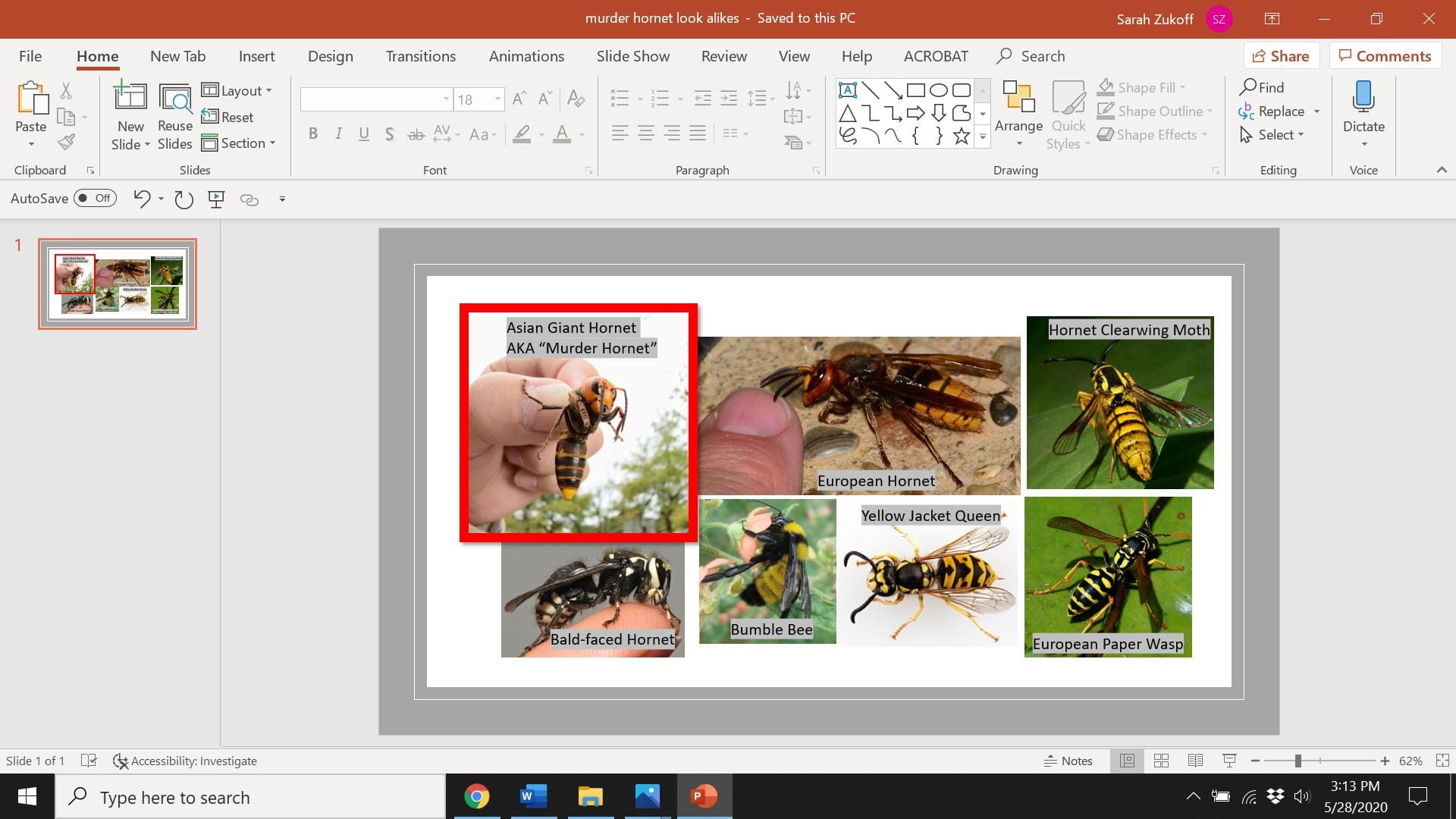–by Frannie Miller and Sarah Zukoff
The Asian Giant Hornet has created a buzz, since being found in the state of Washington/Canada border. These insects have been nicknamed “murder hornets” by the news media. It is important to remember none of these hornets have been found in the state of Kansas. These impressive hornets are similar to our US hornets in that they are not much more aggressive towards people unless their nest or food source is threatened. They do differ however by having a very potent, painful sting. Multiple stings by the Asian giant hornet would warrant medical attention even if the person were not allergic. The hornets build their nests each year underground in abandoned animal burrows or around the roots of trees making the nests hard to detect.
One cause for concern regarding their presence in the United States is their predatory nature towards honeybees. This hornet could devastate European honeybee colonies who have developed no defense mechanisms. Individual guard bees are no contest for the much larger hornet. Groups of hornets can go into a “slaughter phase” where they decimate an entire hive of bees. Then they will occupy the hive and feast upon the honeybee brood.
Japanese honey bees have developed a defensive mechanism to deal with the threat. They form a mass around the hornet and buzz their wings to create heat. The generated heat kills the hornet because the honeybees can survive at higher temperatures. Basically, a good depiction might be the thought of sticking the hornet in a honeybee microwave as illustrated in the cartoon.
Sadly, in all of the hysteria, many of our look-alike pollinators have been mistaken for the Asian Giant Hornet. Reports of panic killing of bumble bees, wasps, and others have been observed on various news and social media outlets.
The Asian Giant Hornet prefers mountainous valleys and has never been recorded from plains regions of any country. It has not been found in Kansas.

